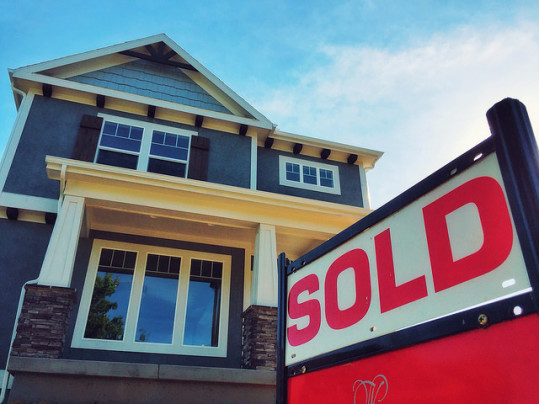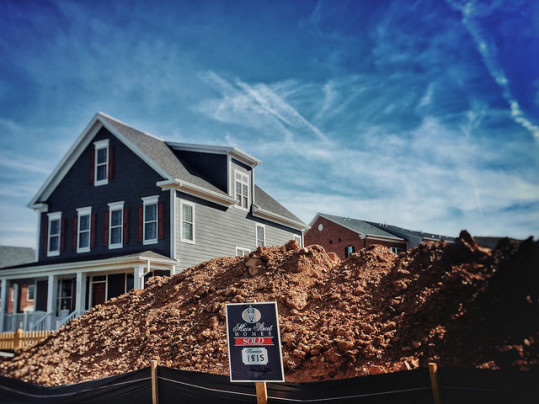Following the housing crash and financial crisis, there was talk that Americans may stop aspiring to homeownership and would no longer see the housing market as a sound investment and reliable creator of wealth. After all, homeowners who saw the values of their homes plummet might become leery and those who hadn’t yet bought a home may’ve considered themselves lucky. And yet, a decade down the road, the market has largely recovered and demand from buyers is running high. Lawrence Yun, the National Association of Realtors’ chief economist, says that is thanks to reforms enacted after the crash. “Over the past 10 years, prudent policy reforms and consumer protections have strengthened lending standards and eliminated loose credit, as evidenced by the higher than normal credit scores of those who are able to obtain a mortgage and near record-low defaults and foreclosures, which contributed to the last recession,” Yun says. And it’s true. Today, market conditions are fueled, not by a lack of a demand, but by a lack of enough homes to meet the high level of demand. Fortunately, Yun sees even more improvement on the horizon. In fact, his forecast for the next year includes rising inventory, moderating price growth, and more home sales as affordability conditions ease and make homeownership even more attractive to prospective buyers. More here.
Archive for August 2018
Mortgage Rates Fall To Lowest Level In A Month
According to the Mortgage Bankers Association’s Weekly Applications Survey, average mortgage rates for 30-year fixed-rate mortgages with conforming loan balances fell to their lowest level since July 20 last week. Rates for loans backed by the Federal Housing Administration and 15-year fixed-rate loans also fell, while jumbo loans saw no change from one week earlier. Joel Kan, an MBA economist, told CNBC that the rate drop was due to the fact that the Fed has signaled that they may be more cautious when considering further rate hikes this year. “Treasury yields were lower over the week, primarily driven by a release of FOMC minutes showing that Fed officials may be taking a more cautious approach to the final two expected rate hikes of 2018,” Kan said. But, despite the mortgage rate decline, the number of buyers seeking loans to buy homes did not increase. In fact, the MBA’s Purchase Index fell 1 percent from the week before, though it remains 3 percent higher than at the same time last year. Refinance activity was also down, dropping 3 percent. The MBA’s weekly survey has been conducted since 1990 and covers 75 percent of all retail residential loan applications. More here.
When Will The Buyer’s Market Return?
Housing market conditions are always in flux. One year, there will be more homes for sale than there are interested buyers. And the next, there will be more buyers than available homes. If you’re thinking about entering the market, it’s good to know where things currently stand and what’s likely to happen in the coming months. That’s because it’ll determine what price you pay and for what. These days, buyer demand is outpacing inventory and, because sellers may have more than one offer to choose from, they can expect to get a higher price for their home. But, since the market is ever-changing, eventually the tide will turn. Because of this, a recent analysis asked 100 real estate economists and experts for their best guess as to when the market will once again favor buyers. Their answers varied. Mostly because where you’re looking will determine the exact conditions you encounter. For example, buyers in the Midwest may already be seeing signs of a shift, with home price increases beginning to slow due to a higher number of available homes than there are in other areas. Overall, however, respondents saw buyers regaining some leverage sometime in the next year and a half, depending on where they’re looking and what they’re looking to buy. More here.
New Home Sales Up 13% Over Last Year
New homes only account for about 10 percent of all home sales. But, despite the fact that they are a small share of overall housing market activity, they are a significant factor in the health of the market. That’s because new home construction is an important part of keeping the supply of available homes at a healthy level. And, when new homes are selling, builders build more. That’s why it’s encouraging that the most recent numbers from the U.S. Census Bureau and the Department of Housing and Urban Development show that sales of newly built single-family homes are now 12.8 percent higher than they were at the same time last year. However, though there has been significant improvement over last year’s numbers, July’s totals came in below economists’ expectations. Economists polled by Reuters had predicted a month-over-month improvement but estimates show an approximately 2 percent drop. Still, gradual gains in the new home market make it more likely that builders will continue to add to the stock of homes for sale, helping to moderate prices and offer buyers more choices. More here.
More Evidence That Home Price Growth May Be Slowing
Over the past few years, rising buyer demand combined with a lower-than-normal number of homes for sale has led to higher home prices in markets across the country. And, though the rate at which prices have increased may differ from one market to the next, affordability conditions aren’t what they were just a few years ago. However, new data may indicate that change is on the way. That’s because there is evidence that home price growth may be starting to slow. In fact, according to one recent analysis, price increases are slowing in almost 75 percent of the nation’s largest markets, including Seattle, Orlando, Boston, Los Angeles, and Portland. In some cases, the drop has been dramatic. For example, in Seattle – last year’s fastest-appreciating market – the rate at which prices grew fell from 14.2 percent to 9.1 percent. But, though this is undoubtedly good news for buyers interested in purchasing a home, it doesn’t mean we’re headed for a buyer’s market any time real soon. That’s because, year-over-year growth is still faster than historically normal. More here.
Flat Home Sales A Sign Of Market Challenges
New numbers from the National Association of Realtors show sales of existing homes were virtually unchanged from the month before. Down 0.7 percent from June, sales were up in the West but a drop in the Northeast negated the gains. Lawrence Yun, NAR’s chief economist, says a lack of available homes continues to hold sales back. “Listings continue to go under contract in under a month, which highlights the feedback from Realtors that buyers are swiftly snatching up moderately-priced properties,” Yun said. “Existing supply is still not at a healthy level, and new home construction is not keeping up to meet demand.” In short, there are more buyers than there are homes for sale in many markets and it’s making it challenging for buyers this summer. Fifty-five percent of the homes sold in July were on the market for less than a month and, though inventory had been seeing modest gains, it stalled in July. That means, market conditions aren’t likely to change much in the months to come, so buyers should prepare for competition this fall and make sure to be pre-approved by a lender before heading out to look at homes. More here.
Steady Mortgage Rates Lead To Increased Demand
According to the Mortgage Bankers Association’s Weekly Applications Survey, average mortgage rates were mostly flat last week, with little movement seen across all loan categories including 30-year fixed-rate mortgages with both conforming and jumbo balances, loans backed by the Federal Housing Administration, and 15-year fixed-rate loans. The lack of volatility in the mortgage market led to an increase in demand for both refinance and purchase loans. In fact, mortgage demand was up 4.2 percent over the week before. But Joel Kan, an MBA economist, told CNBC that, despite boosted demand last week, overall purchase application volume is still being hampered by “persistent problems of affordability and low inventory.” Still, demand for loans to buy homes is just above where it was last year at this time and buyer demand remains high – though home sales remain strongest on the higher end of the market. The MBA’s weekly survey has been conducted since 1990 and covers 75 percent of all retail residential mortgage applications. More here.







